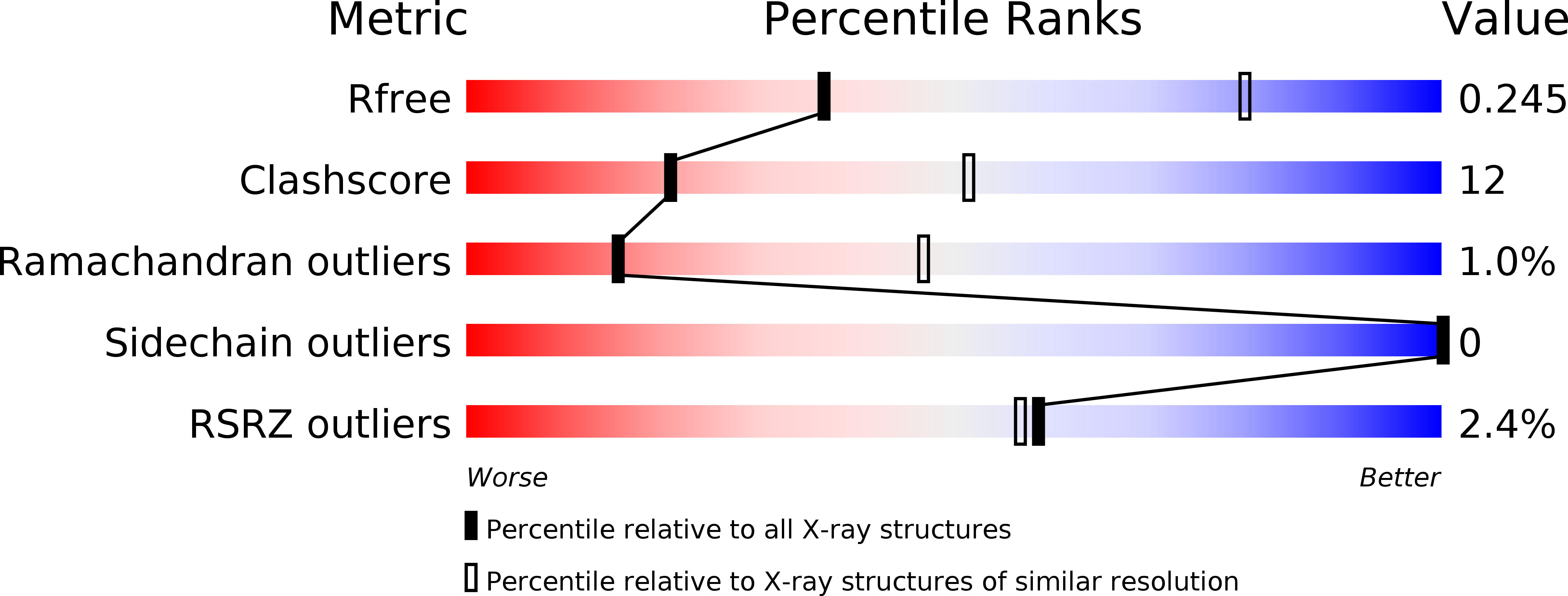
Deposition Date
2011-01-24
Release Date
2011-03-16
Last Version Date
2023-09-13
Entry Detail
PDB ID:
3QGL
Keywords:
Title:
Crystal Structure of PDZ domain of sorting nexin 27 (SNX27) in complex with the ESESKV peptide corresponding to the C-terminal tail of GIRK3
Biological Source:
Source Organism:
Rattus norvegicus (Taxon ID: 10116)
Host Organism:
Method Details:
Experimental Method:
Resolution:
3.31 Å
R-Value Free:
0.25
R-Value Work:
0.23
R-Value Observed:
0.23
Space Group:
P 1 21 1


